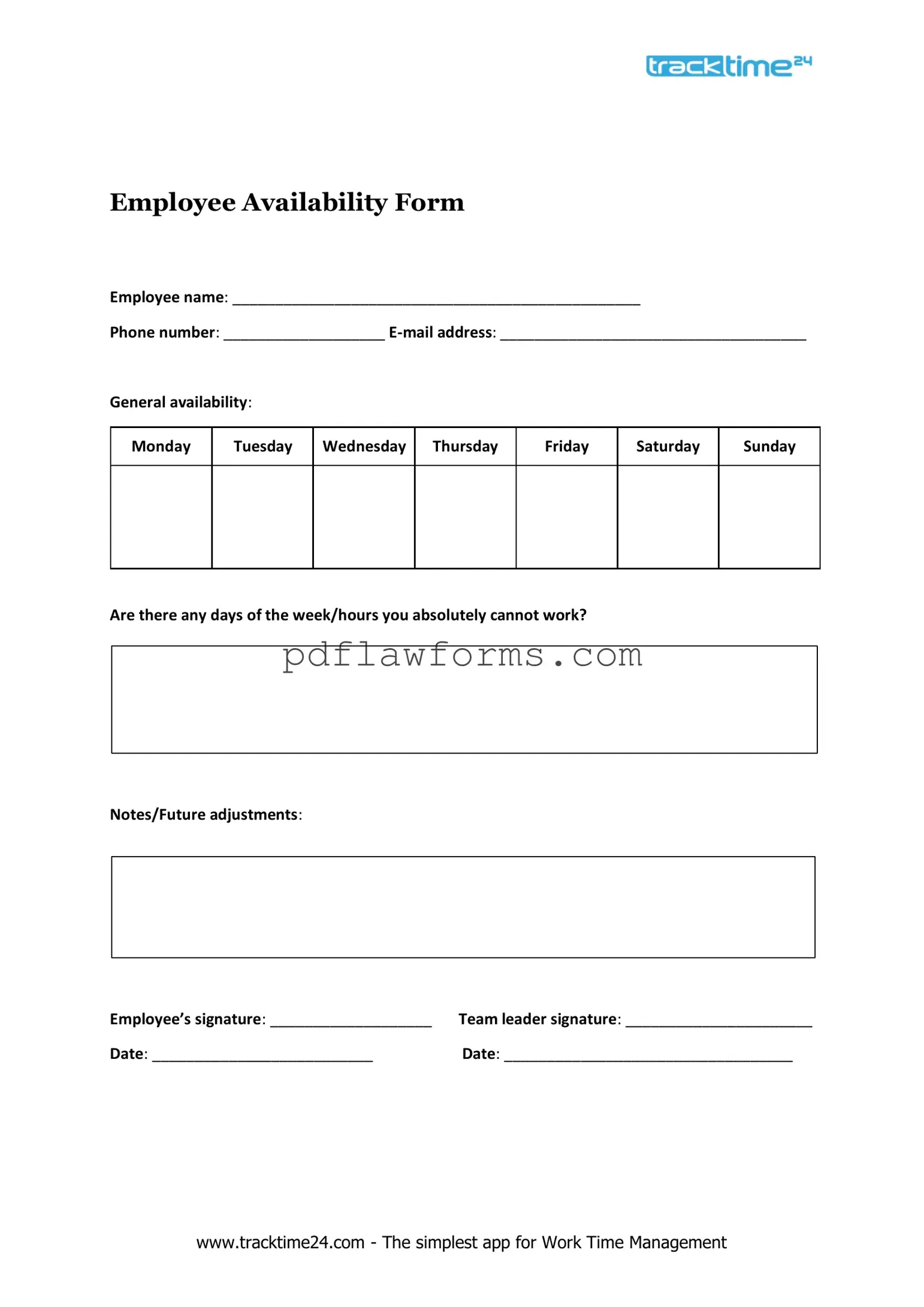When filling out an Employee Availability form, individuals often overlook crucial details that can lead to misunderstandings or scheduling conflicts. One common mistake is failing to provide accurate contact information. Employers rely on this information to reach employees for shift changes or emergencies. If the contact details are incorrect, it can create confusion and hinder effective communication.
Another frequent error is not indicating specific availability times. Some people may simply check off that they are available without specifying which days or hours. This lack of clarity can result in being scheduled for shifts that do not align with personal commitments or preferences.
Many individuals also forget to update their availability when circumstances change. Life events, such as a new job, school schedule, or family obligations, can impact availability. If employees neglect to communicate these changes, they risk being scheduled for shifts they cannot work.
In addition, some employees may underestimate the importance of being honest about their availability. While it might seem tempting to claim more availability than one truly has, this can lead to stress and burnout. Employers appreciate honesty, and it helps create a more manageable schedule for everyone involved.
Another common mistake is overlooking the need for breaks. Employees sometimes fill out their availability without considering the importance of rest periods. Not factoring in breaks can lead to fatigue and decreased job performance over time.
Moreover, individuals may fail to consider peak business hours when indicating their availability. For instance, if someone is only available during off-peak hours, it may not align with the company's needs. Understanding the business's operational hours is essential for effective scheduling.
Some employees also neglect to ask questions if they are unsure about how to fill out the form. Seeking clarification from a supervisor or HR representative can prevent mistakes and ensure that the form is completed correctly.
Another mistake is not reviewing the form before submission. A quick review can catch errors or omissions that could lead to scheduling issues. Taking a moment to double-check can save time and frustration later.
Additionally, individuals sometimes forget to account for travel time when indicating their availability. If someone can only work certain hours but needs extra time to commute, this should be clearly noted to avoid scheduling conflicts.
Finally, a lack of attention to detail can lead to incomplete forms. Leaving sections blank or providing vague answers can create confusion for employers. It is essential to fill out the form thoroughly to ensure that everyone is on the same page regarding availability.
